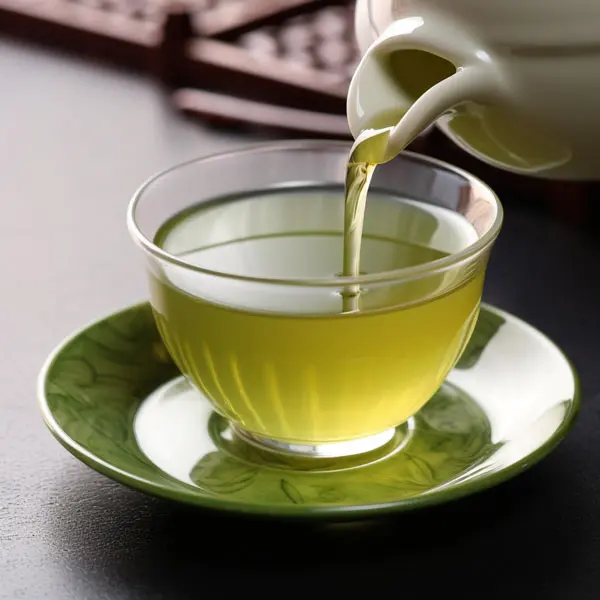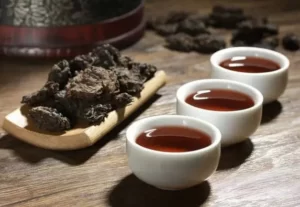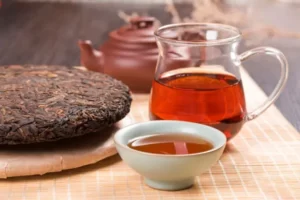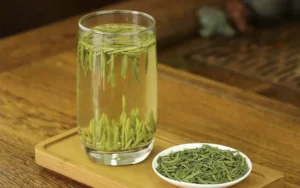Introduction
If you search online, you’ll find hundreds of teapots with diverse shapes and designs. However, some of these teapots prioritize innovation over practicality. In the realm of purple clay teapots, the artisans of Yixing, China, have accumulated centuries of experience and distilled several principles that combine aesthetics and functionality. Abiding by these principles results in the best teapot shapes. Let me take you through them today.
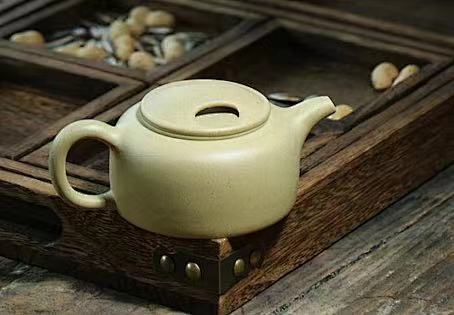
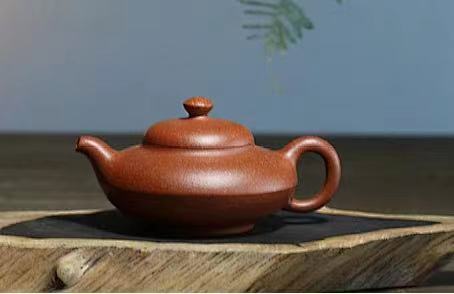
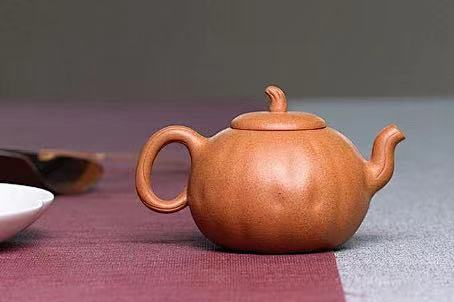

Principle 1: Combination of Circles
The circle is the most prevalent and universal element in the geometry of purple clay teapots. Taking the classic “Duo Qiu” teapot as an example, it may appear simple, but it demands strict adherence to geometric form, placing high demands on the creator.
The key to this teapot lies in “circles.” One circle connects to another, circles overlap with circles, and circles intersect with circles. The challenge is to achieve a smooth, seamless flow of lines throughout the entire teapot while maintaining tension and elegance.
The difficulty in crafting a “Duo Qiu” teapot lies in not only integrating all its components into a cohesive circle but also ensuring that each component retains its individual circular concept. This level of craftsmanship is truly remarkable.
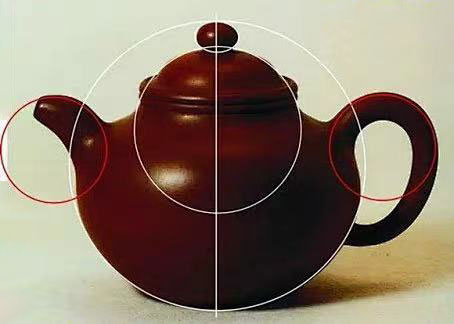
Principle 2: Center of Gravity and Stability
The shape of a purple clay teapot must adhere to the principle of being “stable.” Stability refers not only to its steadiness during use but also to the visual sense of composure it exudes. To enhance usability and artistic creation, most purple clay teapots are designed with circular or symmetrical forms.
These designs revolve around the central axis of the teapot’s body, and the center of gravity falls on this axis. The vertical line extending from the center of gravity downward necessarily intersects with the center point of the bottom of the teapot, visually impacting its stability.

Additionally, variations in the shoulder and abdomen of the teapot also affect the overall shape’s center of gravity and stability. For instance, if a teapot has a shorter body and a larger base, the center of gravity will shift downward, giving it a more stable and grounded appearance. Conversely, a taller body with a smaller base will elevate the center of gravity, creating a sense of lightness and dynamism.
Take the “Qin Quan” teapot as an example. It has a relatively tall body to exude an air of stability and magnificence. Therefore, the bottom of the teapot is designed to match the size of its body, ensuring a symmetrical and stable appearance.
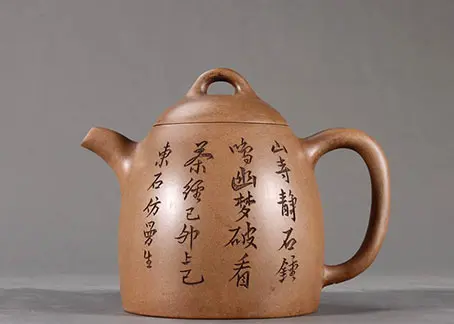
Similarly, the “Shi Piao” teapot adopts an almost upright triangular shape on its lateral side. Its center of gravity relies entirely on the bottom of the teapot, but the base is supported by three raised feet in a tripod manner, making the design stable yet not overly heavy. In the case of the “Zi Ye Shi Piao” teapot, the body, spout, and handle all form triangles, with the angle of the spout joining the body also resembling a triangle. The handle’s transition from the body to the spout creates three intersecting triangles, supporting a stable structure on both sides.

The balance between the teapot’s spout and handle significantly affects the overall structural equilibrium. If one side is too heavy, or if the handle extends excessively outward from the body, the center of gravity will deviate from the central axis. If the spatial arrangement of the spout and handle on either side of the teapot is improper, it will also disrupt the overall balance of the design.
For instance, the “Imitation Ancient Ruyi” teapot, while seemingly unrelated to a triangular structure, actually follows this principle. With skillful execution of the inverted isosceles triangular structure between the spout and handle, the teapot naturally becomes pleasing to the eye. By symmetrically positioning the spout and handle, the teapot exudes an aura of composure and stability.
The structure of an inverted triangle is often seen in teapots with a single curved spout.
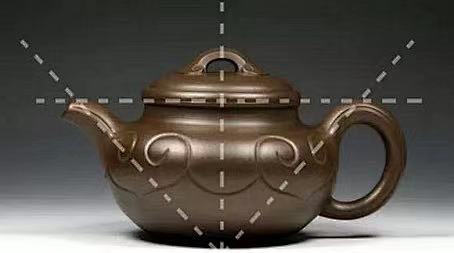
Principle 3: Symmetry and Coordination
Symmetry and coordination in the design of purple clay teapots involve presenting differences and similarities in various parts of the teapot. Elements such as the size of the teapot’s body, its square or circular shape, the curvature of lines, the thickness of the clay, and the temperature of colors all contribute to different visual effects. In the art of purple clay teapots, symmetry and coordination are often used interchangeably in a single piece to achieve a more appealing overall appearance.
For instance, when designing the knob and body of a teapot, artisans often use the technique of “small complementing large,” creating a contrasting size comparison between the two. Meanwhile, they shape the knob to match the body’s form, achieving harmony through contrast.
Take the “Double-Line Bamboo Drum” teapot as an example. It achieves both roundness and symmetry in its form and contour. Although left and right sides are symmetrical, the designer skillfully employs lines, surfaces, and spatial transitions to achieve unity, coordination, and symmetry in the overall shape. The curves and straight lines of the “Double-Line Bamboo Drum” teapot blend seamlessly, resulting in a harmonious and unified appearance.

Principle 4: Combination of Solid and Hollow Spaces
Solid and hollow spaces refer to the three-dimensional form of the teapot and the space formed outside its physical boundaries. Appropriate contrasts between solid and hollow spaces enhance the teapot’s characteristics and decorative elements, which is a crucial factor in achieving a complete sense of design. For example, when the handle rotates around the teapot’s body, creating two distinctive spaces, if these spaces echo the main body’s shape or its line features, they enhance the overall impression of the teapot.
Adding supports to the teapot’s base to elevate it enhances the sense of empty space at the bottom. Alternatively, using a lifting beam on the shoulder increases the upper part’s empty space. Similarly, the use of a simple bridge-shaped knob can create a hollow space at the top of the teapot. These techniques leverage the principle of solid and hollow contrast to strengthen the teapot’s visual impact.
Consider the “Tiliang” teapot. Its center of gravity lies in the lower part of the teapot, giving it a sturdy and dignified appearance. However, by using the raised handles to create an upper hollow space, the teapot gains an expansive and imposing feel. The complete space formed by the raised handles also enhances the decorative element of the design. The raised handles allow the teapot to appear expansive and grand, adding to its overall magnificence.

Appropriate contrasts between solid and hollow spaces enhance the teapot’s characteristics and decorative elements. Adding supports to the teapot’s base elevates the lower part’s empty space, as seen in the “Four-Sided Stove” teapot.

Principle 5: Unity of Whole and Part
The mouth, neck, shoulder, body, foot, base, lid, knob, spout, handle, and other elements of the teapot are all considered individual parts relative to the whole. These details must conform to the overall design, achieving organic integration with the teapot’s entirety.
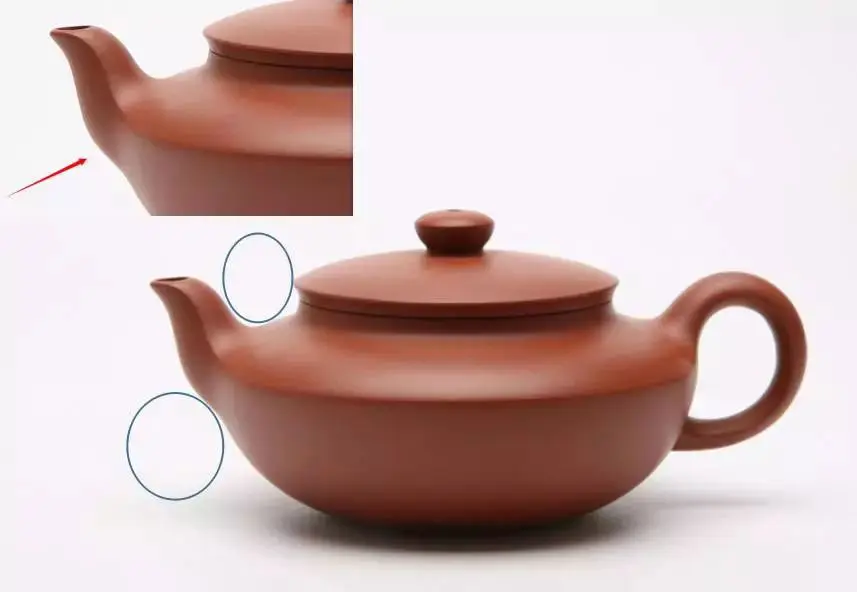
The connection between the spout and handle and the teapot’s body is typically handled through either intersecting or transitional lines. In the art of purple clay teapots, this is referred to as “visible” and “concealed” connections. Since purple clay teapots are handcrafted, the connection between the spout and handle and the main body often employs a transitional line structure (concealed connection), as seen in the “Han Bian” teapot above.
In addition, purple clay teapots also adopt visible connections between the spout and handle and the body, as seen in the “Han Fang” teapot. This method results in clear outlines and crisp lines, enhancing the square teapot’s distinctive features. The visible connection method ensures clear outlines and distinct lines.
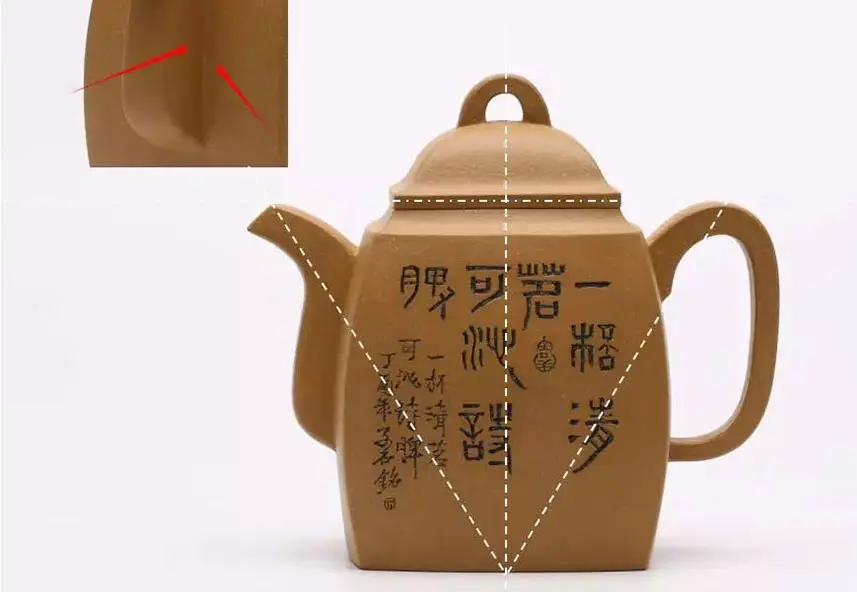
Conclusion
In conclusion, crafting the best shape for a teapot involves a delicate balance between aesthetics and practicality.
The geometric forms, center of gravity, symmetry, solid and hollow spaces, and the unity of its components all play a pivotal role in creating a masterpiece of both artistry and functionality in the world of purple clay teapots. The principles handed down by the artisans of Yixing continue to inspire teapot makers around the globe, reminding them of the timeless wisdom that defines the best shape for a teapot.
